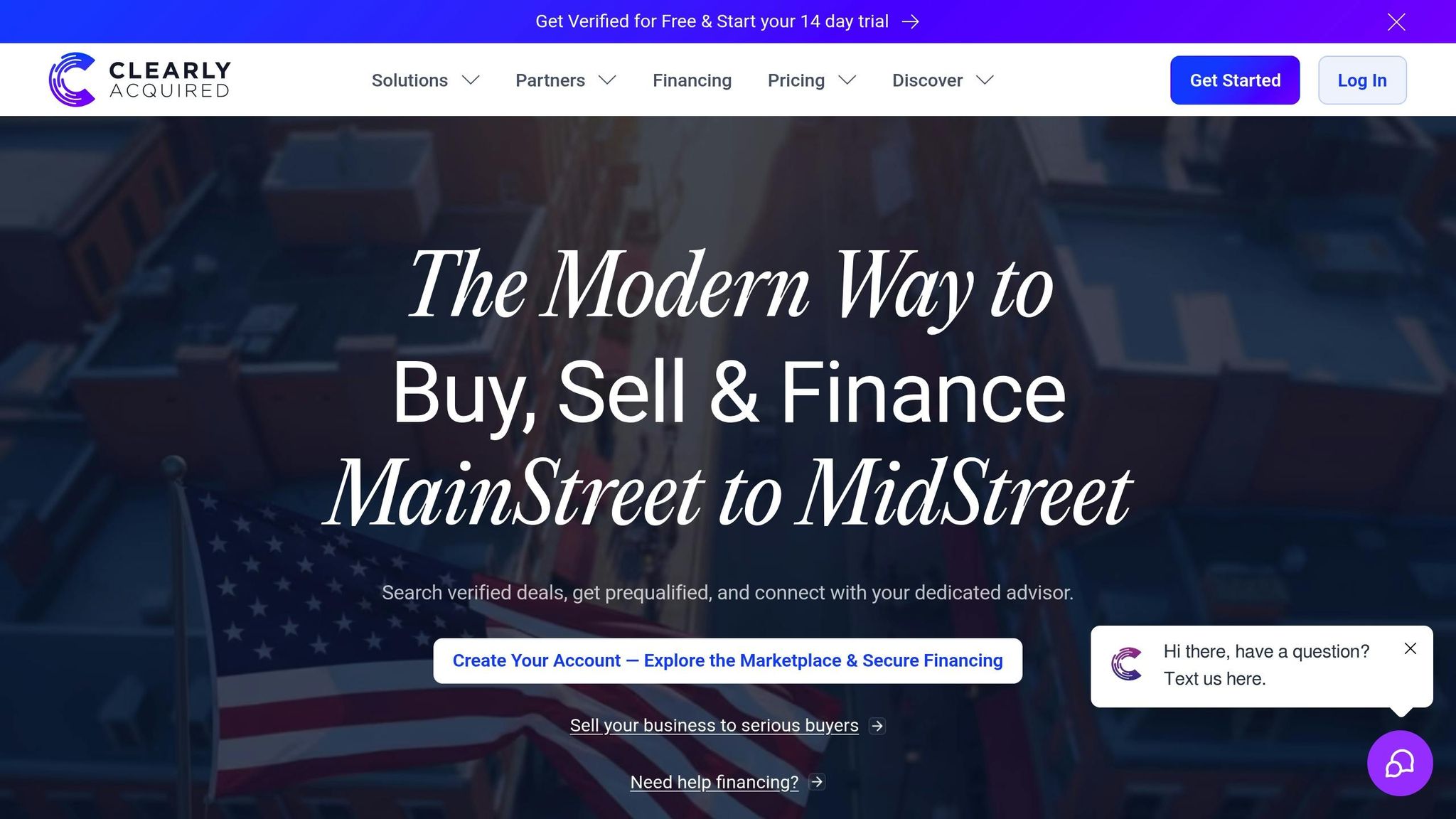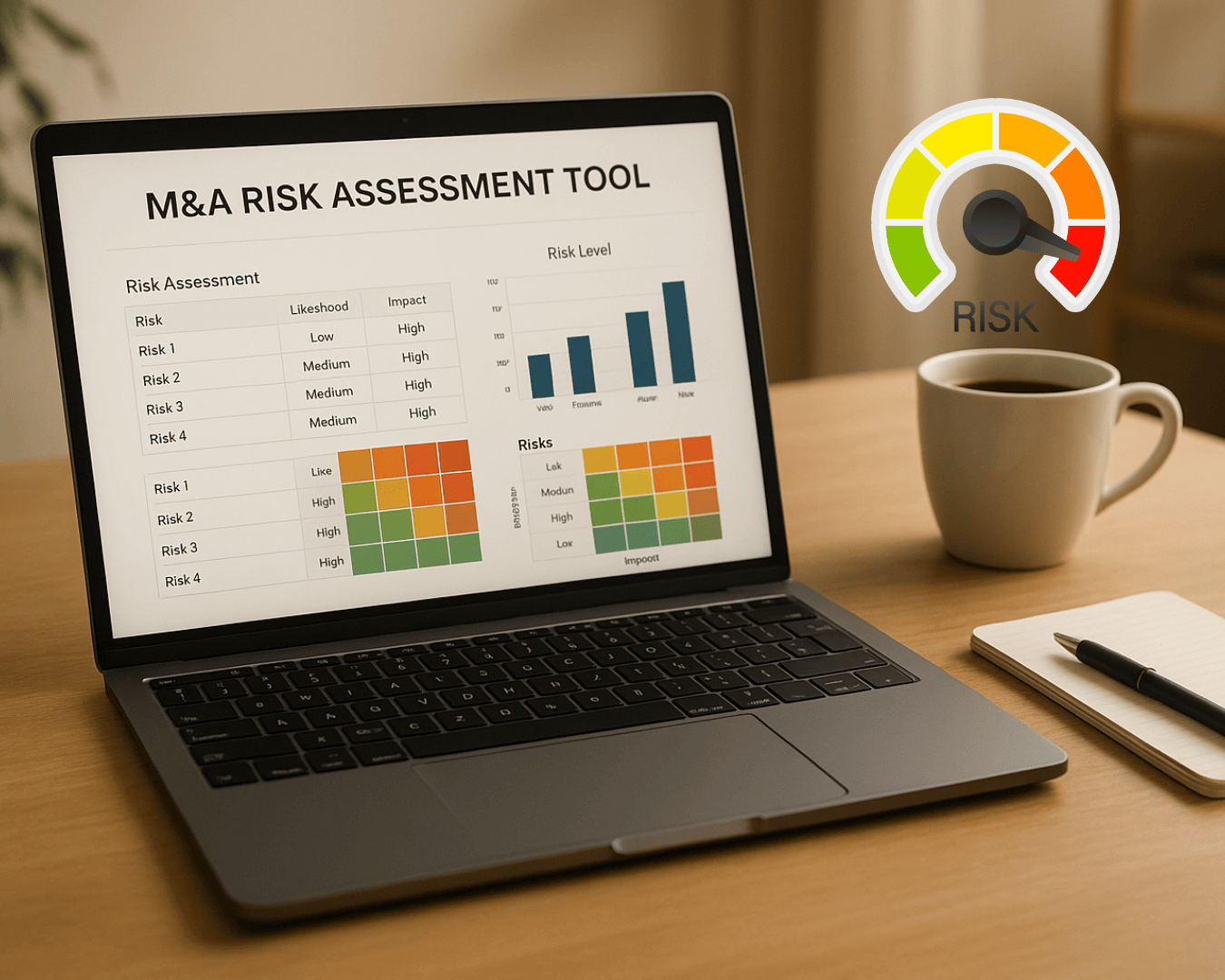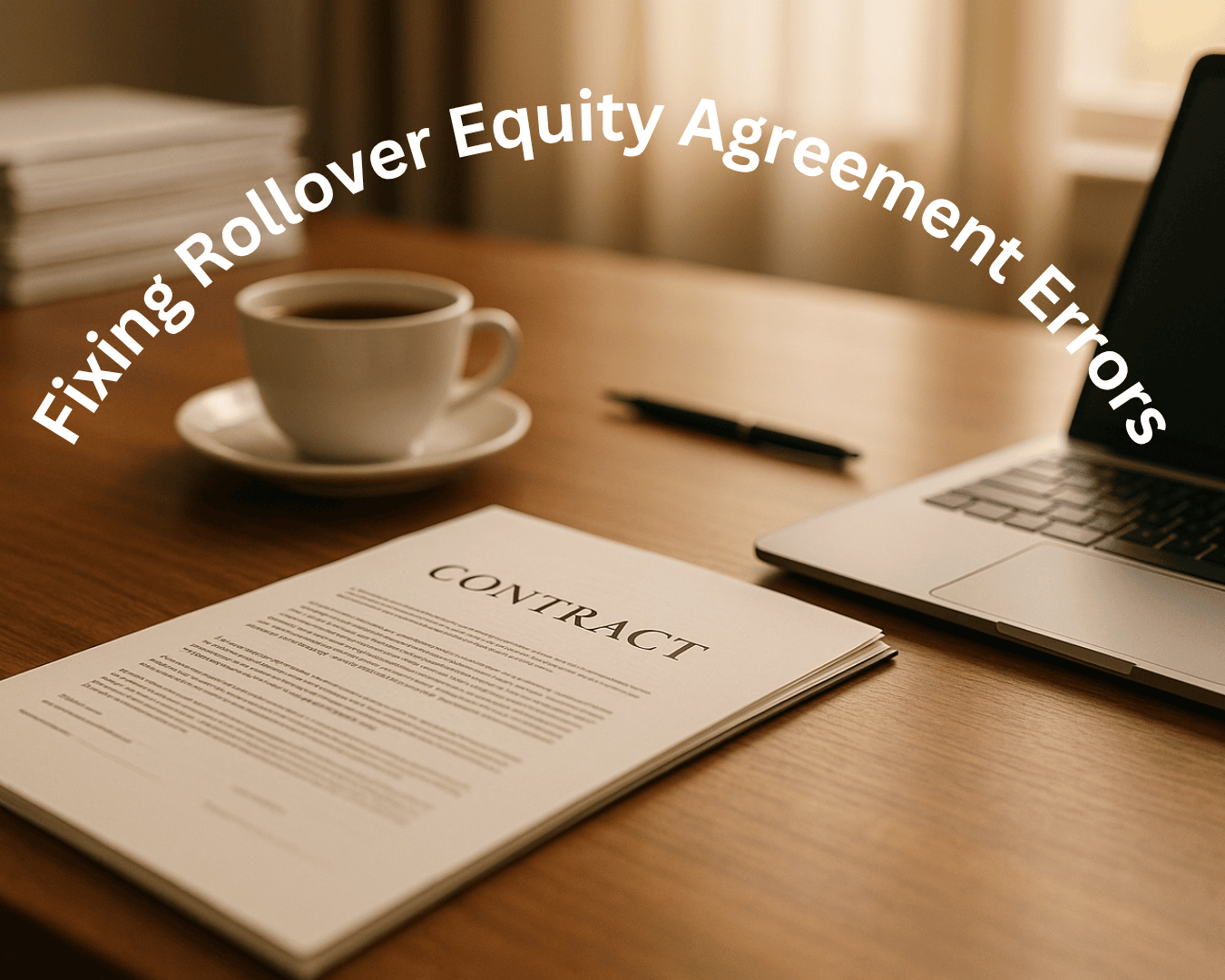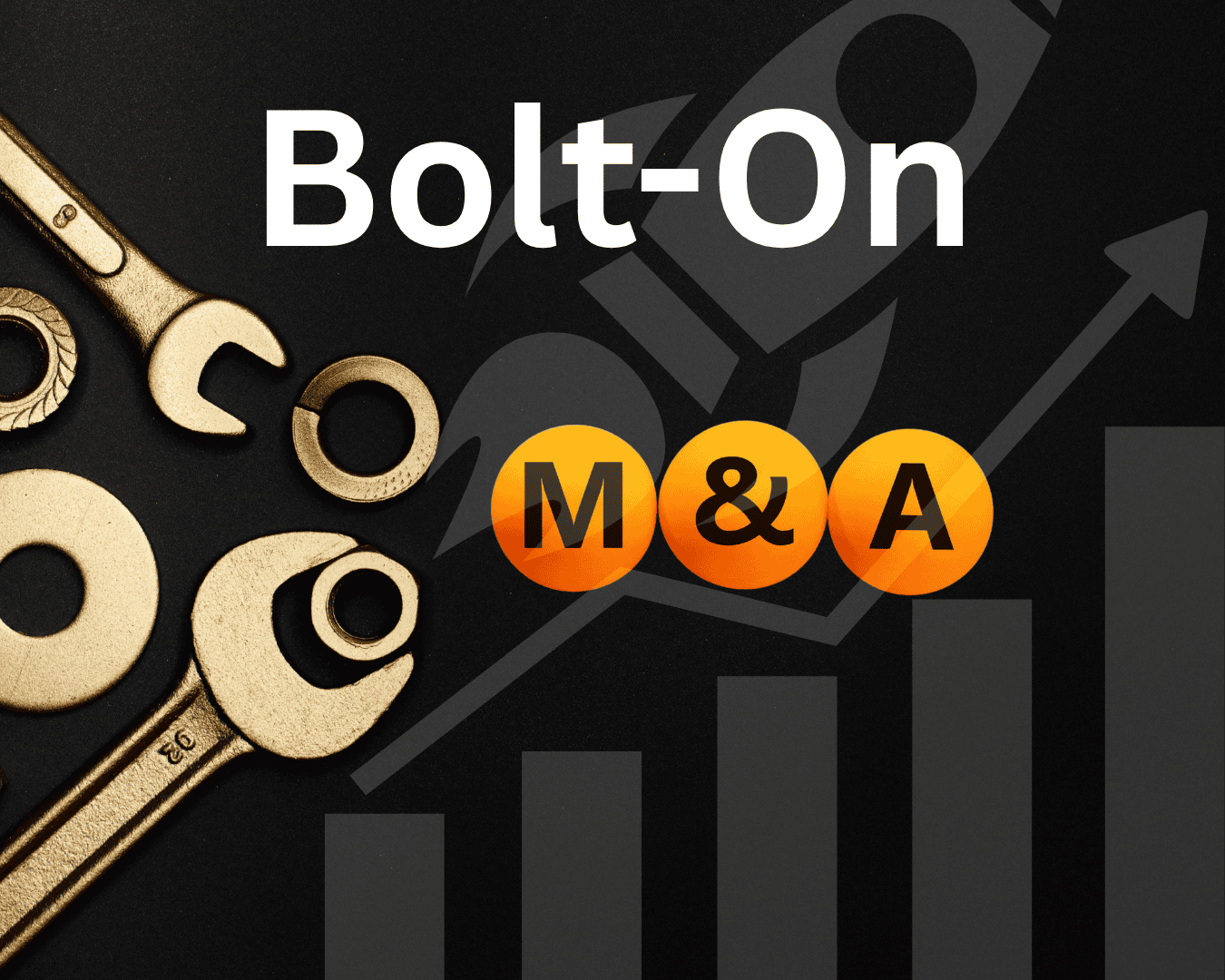Operational metrics are critical for mergers and acquisitions (M&A) success, yet many deals fail - 70-90% miss their goals due to overlooked integration challenges. These metrics go beyond financial statements, offering insights into day-to-day performance like customer retention, employee productivity, and process efficiency. Here's why they matter:
- Identify Risks: Metrics like customer satisfaction or employee turnover can signal potential challenges hidden in financial data.
- Shape Valuation: Strong metrics justify higher valuations and reveal growth potential, such as scalability or capacity utilization.
- Guide Integration: Metrics help track progress, streamline processes, and achieve cost savings (10-15% within 18 months is a common target).
Key types of metrics include:
- Productivity/Efficiency: Labor utilization, output per employee, and process bottlenecks.
- System Integration: IT compatibility and user adoption rates.
- Financial Performance: Profit margins, cash flow trends, and revenue stability.
- Capacity Utilization: Resource usage and scalability potential.
Using tools like AI platforms simplifies data analysis, benchmarking, and integration planning. By focusing on these metrics, acquirers can reduce risks and improve the likelihood of success.
Operations Diligence in M&A | EBITDA Improvement | Mergers and Acquisitions | Grant Thornton
Main Types of Operational Metrics Used in M&A
Operational metrics provide key insights into a company's performance, shaping both valuation and integration strategies in mergers and acquisitions (M&A).
Productivity and Efficiency Metrics
These metrics measure how effectively a company uses its resources. Common examples include output per employee, labor utilization rates, and process throughput times. For instance, a higher output per employee often reflects streamlined workflows, effective employee training, or advanced equipment - all of which can enhance a company's valuation.
Labor utilization rates reveal whether the business is operating at full capacity or has unused potential. This is crucial for understanding how much additional work the company can handle after acquisition. Similarly, analyzing process throughput times can uncover bottlenecks, offering opportunities for operational improvements during the integration phase. Additionally, evaluating system compatibility sheds light on potential challenges in merging operations.
System Integration and Adoption Metrics
These metrics focus on how seamlessly technology systems can combine and how quickly employees adapt to new processes. For example, assessing the compatibility of IT systems - such as enterprise resource planning (ERP) or customer relationship management (CRM) platforms - can help predict integration complexity. Metrics like system merge times can also highlight potential disruptions or hidden costs.
User adoption rates are another critical measure. High adoption rates during early integration suggest a workforce that is adaptable and open to change, while slower adoption might signal potential hurdles that could delay achieving the expected synergies. Alongside system readiness, financial metrics offer further confirmation of a company's operational stability.
Financial Performance Metrics
Financial metrics compare actual results to budgeted forecasts, revealing how well a company manages costs and plans for the future. For example, trends in profit margins can indicate whether the business maintains operational efficiency and pricing power. Meanwhile, steady revenue growth over several years - rather than erratic performance - can signal stability in operations and market positioning.
"When acquiring an SMB, analyzing historical financial trends is essential to understanding the company's true health and sustainability. Multi-year patterns in revenue, profit margins, cash flow, and debt reveal whether performance is stable, improving, or deteriorating - helping buyers spot risks that single-year data can hide. Ignoring these trends can lead to overpaying for inflated earnings or missing red flags that threaten post-acquisition success."
Capacity Utilization Metrics
Capacity utilization metrics evaluate how effectively a company uses its resources and assets. These figures help buyers determine scalability - whether the business can handle increased volume without significant new investment. For example, if a facility operates well below capacity, it may offer room for growth post-acquisition. On the other hand, operations running near maximum capacity might require additional investment to expand.
Analyzing asset utilization can also pinpoint inefficiencies. Optimizing underused resources can lead to cost savings and synergies, offering a clearer picture of whether the company can scale without immediate capital expenditures.
Together, these four categories provide a well-rounded understanding of a company's operational health. Tools like Clearly Acquired use AI-driven analysis to uncover patterns and opportunities that might otherwise remain hidden, giving stakeholders a deeper perspective on potential deals.
Methods for Measuring and Comparing Operational Metrics
Measuring and comparing operational metrics involves a structured process that combines data collection, benchmarking, and advanced analytics. Here's how it typically unfolds:
Due Diligence for Operational Metrics
The journey begins with gathering data from multiple sources. Internal systems like ERP and CRM platforms provide critical insights into areas such as process throughput times, resource utilization, and customer interaction patterns. Financial statements add historical performance data, while employee surveys can uncover operational hurdles that raw numbers might miss.
Workflow mapping plays a crucial role here. By visualizing process flows, organizations can identify bottlenecks. For instance, mapping a customer onboarding process might reveal delays caused by manual data entry - an area ripe for automation. To ensure accuracy, data verification is essential. This involves cross-referencing data from various sources to confirm consistency and alignment with organizational processes. Employee feedback and customer satisfaction surveys further enrich the analysis by highlighting issues that standard metrics might not capture but could significantly impact integration after an acquisition.
Once the data is collected, the next step is benchmarking it against industry standards.
Comparing Against Industry Standards
Benchmarking provides context for operational performance by comparing metrics with industry norms. This involves sourcing benchmark data from market research, competitor analysis, and external databases to set realistic performance expectations.
Key metrics such as cost per unit, employee productivity, and customer retention rates are compared to industry averages. For example, if a target company’s employee productivity lags behind industry standards, it might signal opportunities for improvement through better training, process optimization, or technology upgrades. These performance gaps help shape post-merger goals and integration strategies, ensuring that the focus remains on areas with the most potential for improvement.
The final step involves leveraging advanced tools to refine these insights.
Tools and Resources for Analysis
Modern mergers and acquisitions (M&A) increasingly rely on AI-powered platforms and advanced analytics tools to streamline the evaluation of operational metrics. AI-driven data rooms, for example, have transformed due diligence by enabling teams to efficiently screen, manage, and process deals. Platforms like Clearly Acquired provide access to a vast dataset of over 200 million off-market businesses, offering detailed business and comparable data for benchmarking. This expansive resource allows acquisition teams to assess target companies against a broad range of industry peers, highlighting strengths and weaknesses with precision.
Technologies such as process intelligence, process mining, simulation, and optimization tools offer end-to-end visibility into operations during M&A evaluations. Recent deals have shown how these tools enhance operational understanding and efficiency, identifying patterns and opportunities that might be missed through traditional analysis.
These advanced tools not only flag unusual trends but also predict potential integration challenges and propose optimization strategies based on successful past patterns. Experts recommend selecting KPIs that align with strategic objectives, setting measurable targets, and continuously monitoring progress. Flexibility is key - adjusting targets as integration evolves ensures that the analysis remains dynamic. Considering that 70–90% of M&A deals fail to meet their intended goals, often due to poor integration and inadequate metric tracking, deploying advanced analytics and a systematic approach is critical for success.
sbb-itb-a3ef7c1
Using Operational Metrics in Real M&A Scenarios
Operational metrics aren’t just theoretical - they’re the backbone of every stage in the M&A process. Effectively using these metrics throughout the acquisition lifecycle, from evaluating potential targets to post-merger integration, can spell the difference between success and joining the 70-90% of M&A deals that fail to meet their goals.
Evaluating Acquisition Targets
When it comes to assessing acquisition targets, operational metrics provide a full-spectrum view of the target’s performance. Experienced buyers combine these key numbers with insights from employees and customers to create a well-rounded picture of the business.
For instance, spotting inefficiencies in the target’s processes can uncover risks but also highlight areas ripe for improvement. A company with higher-than-average employee turnover might signal challenges in cultural alignment, but it could also point to untapped opportunities for boosting efficiency through better management practices.
Tools like process intelligence and analytics make it easier to dig into operational data and identify areas where automation could make a big impact. Imagine a manufacturing firm still using manual inventory tracking - automating this process post-acquisition could significantly cut labor costs and improve accuracy.
Technologies such as process mining, simulation, and optimization are invaluable for evaluating a target's performance and estimating future synergies. Benchmarking against industry standards adds even more clarity. By comparing metrics like profit margins, customer satisfaction, and employee turnover with industry averages, buyers can separate underperforming companies with potential from market leaders that justify higher valuations.
Once the target is selected, operational metrics continue to play a critical role in shaping integration strategies.
Post-Merger Integration and Workflow Improvement
After the deal closes, operational metrics serve as a guide for successful integration. Metrics like adherence to the integration timeline, process efficiency, and employee productivity help teams track progress and quickly address bottlenecks. Employee engagement scores and training completion rates can act as early alerts for cultural challenges that might lead to talent loss or dips in productivity if not managed properly.
Cost synergies are another key focus. Tracking metrics like total cost savings and operational efficiency ratios ensures that financial goals, such as a 10% reduction in operational costs within 18 months, are on track. Regularly monitoring these numbers allows management to make timely adjustments and keep the integration process aligned with financial expectations.
To improve workflows, it’s crucial to set clear, measurable goals for key metrics and review progress regularly. Incorporating feedback from employees and customers can provide valuable insights that raw numbers might miss. The most effective integrations use dashboards to monitor key operational KPIs, assign accountability for tracking them, and schedule regular reviews to evaluate progress.
Using Clearly Acquired for Insights

Clearly Acquired’s platform simplifies offers access to a broad marketplace of businesses for sale, including both public and private listings, complete with detailed operational data for benchmarking. Its AI-powered data rooms streamline due diligence, enabling teams to quickly screen, manage, and analyze deals while incorporating operational metrics into the process. This turns what is often a manual, time-consuming task into a more efficient, data-driven evaluation.
Sellers also benefit from tools that showcase their operational strengths, while brokers and lenders gain access to secure data rooms and streamlined deal screening features. Additionally, the platform automates data collection and reporting, making it easier to spot operational issues and opportunities early. This capability supports agile adjustments to integration strategies, helping all parties involved in the deal stay ahead of potential challenges.
Conclusion: Key Takeaways and Next Steps
Operational metrics form the backbone of successful mergers and acquisitions (M&A). Yet, despite their importance, 70-90% of deals fail because acquirers neglect to fully assess how targets track, analyze, and act on these metrics throughout the acquisition process.
Key Lessons from Operational Metrics in M&A
Throughout this discussion, one thing is clear: operational metrics play a pivotal role in every phase of M&A. Successful acquirers don't just use metrics to evaluate targets - they rely on them to guide integration. Metrics like clear KPIs, revenue growth targets of 15-20% over two years, and cost reductions of 10-15% are critical for achieving synergy realization.
During the evaluation phase, metrics such as employee turnover, customer satisfaction, and process efficiency provide insights into current performance and highlight areas for improvement. Early indicators like employee engagement and training completion rates are especially valuable, as they can signal potential integration challenges that might derail the transaction if left unchecked.
The Importance of Ongoing Monitoring
Regular monitoring is essential to prevent value erosion and address underperformance before it becomes a problem. Automated data collection and monthly KPI reviews help maintain focus on key metrics like revenue growth, EBITDA margin, and customer satisfaction. This consistent tracking not only sustains momentum but also fosters continuous improvement.
Tools like automated dashboards and structured monthly reviews ensure teams stay aligned and informed. These systems create accountability by linking operational metrics directly to strategic goals, allowing stakeholders to see how their efforts contribute to the overall success of the deal. More importantly, they ensure that insights gained during due diligence translate into measurable, lasting value after the acquisition closes.
Using Tools for Better M&A Decisions
In today’s M&A landscape, specialized platforms are becoming indispensable for streamlining metric tracking and making data-driven decisions throughout the transaction lifecycle. For example, Clearly Acquired’s AI-powered platform centralizes data, automates reporting, and integrates financing decisions, making it easier to manage deals from start to finish.
The platform’s AI-driven valuation tool combines financial data, industry benchmarks, and market trends to deliver precise valuations. Meanwhile, automated data collection uncovers operational issues and opportunities early in the process, helping acquirers make informed decisions.
FAQs
How do operational metrics impact a company's valuation during a merger or acquisition?
Operational metrics are essential when evaluating a company's worth during mergers and acquisitions. They shed light on how well a company operates, its profitability, and its potential to grow, giving both buyers and sellers a clearer picture of risks and opportunities.
Metrics such as revenue growth, profit margins, customer retention rates, and operational efficiency are key indicators that help stakeholders make smarter decisions and strike balanced deals. Understanding these numbers not only aids in negotiations but also pinpoints areas that could be improved, building trust and confidence throughout the transaction process.
What are the biggest challenges during the integration phase of M&A, and how can operational metrics help resolve them?
Mergers and acquisitions (M&A) often bring a host of challenges during the integration phase. Companies need to align operations, handle financial risks, meet regulatory requirements, and address employee concerns - all of which can create roadblocks if not managed well.
This is where operational metrics come into play. These metrics provide clear, data-driven insights that help track progress and spot potential issues early. By monitoring key performance indicators (KPIs) like cost synergies, revenue growth, and employee retention, businesses can make smarter decisions, ensuring the integration process runs more smoothly and sets the stage for long-term success.
How can AI-powered tools improve the analysis and monitoring of operational metrics during the M&A process?
AI-powered tools are transforming how operational metrics are analyzed and tracked during mergers and acquisitions. By automating complex processes, these tools deliver real-time insights, making it easier to spot key patterns, trends, and potential risks in operational data. This leads to better-informed decisions throughout the process.
On top of that, AI systems simplify workflows by bringing together data from multiple sources, cutting down on manual errors, and using predictive analytics to anticipate performance. With these efficiencies in place, buyers, sellers, and investors can concentrate on strategic goals and move through transactions more smoothly.






































.png)








































%20Loan%20Application%20Checklist.png)






























